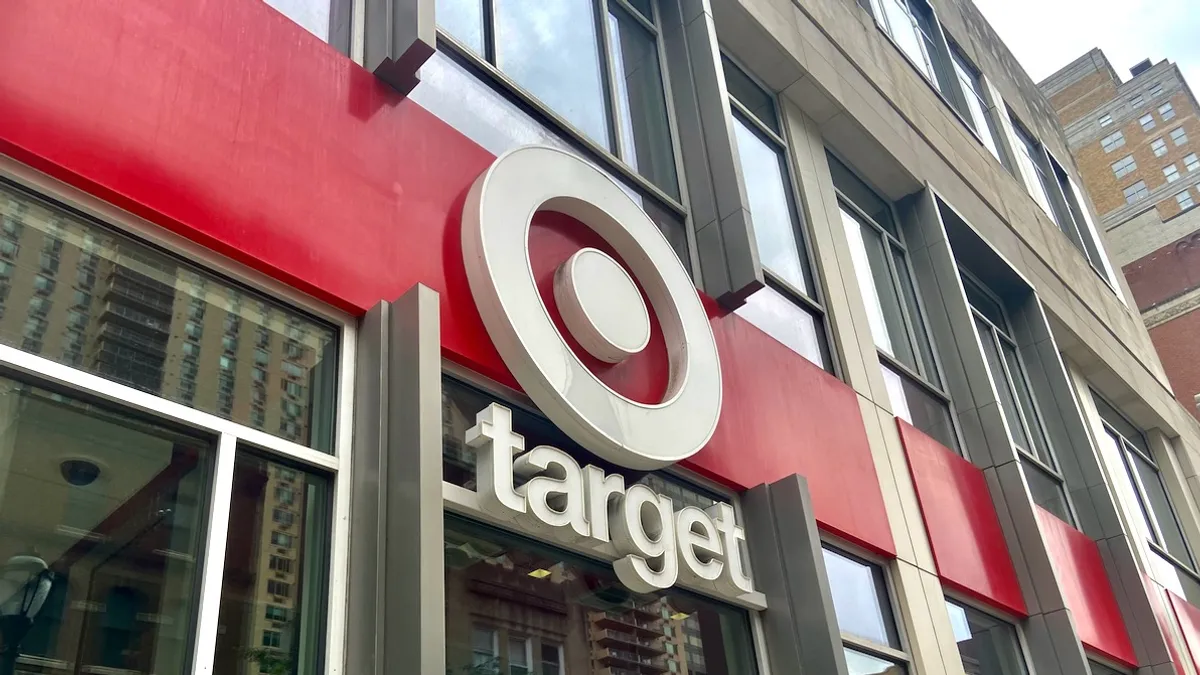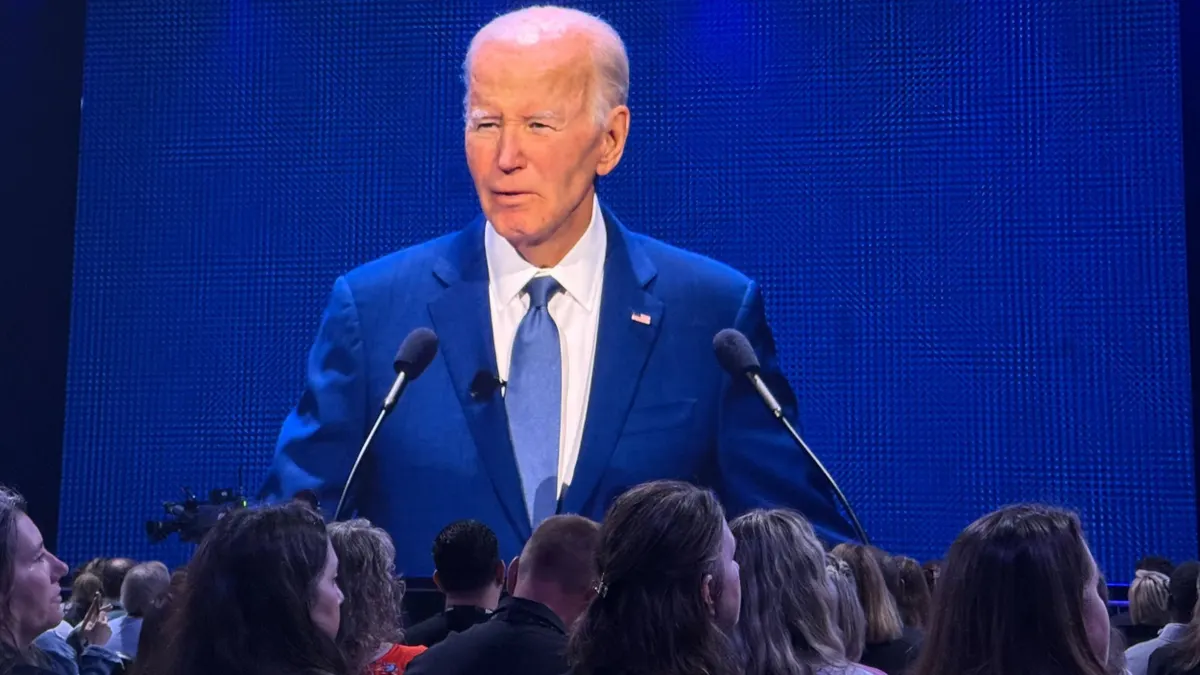On Friday, Oct. 30, at 1:30 a.m. eastern time, every Expensify customer received a newsletter in their inboxes urging them to vote for Joe Biden in the 2020 election.
"I know you don’t want to hear this from me," the message, signed by company CEO David Barrett, began. "And I guarantee I don’t want to say it. But we are facing an unprecedented attack on the foundations of democracy itself. If you are a US citizen, anything less than a vote for Biden is a vote against democracy."
Despite the risk of upsetting clients, Barrett insisted this message stayed true to his obligation to the company’s shareholders.
"Expensify depends on a functioning society and economy; not many expense reports get filed during a civil war," he wrote. "I’m obligated on behalf of shareholders to take any action I can to avoid it. I am confident our democracy (and Expensify) can survive a Biden presidency. I can’t say the same about Trump. It’s truly as simple as that."
The message, sent to 10 million users across 100,000 businesses, stood in contrast to the recent news involving Coinbase’s CEO, who sought to develop an apolitical culture.
The role of political and social commentary by companies, business leaders and employees at work has seen an evolution over the past few years, leading to increased tension in some workplaces. In many ways, Barrett’s email may set a new high-water mark for corporate activism.
But this act was hardly an anomaly. Expensify has a unique culture and because of its transparency as an organization, the company said the email did not elicit any significant internal backlash. And while many external individuals receiving the newsletter expressed disdain on social media, the company also characterized the external response as generally positive. Expensify reported that job applications nearly tripled and it did not see mass cancellation from clients.
"Some people do leave," Barrett told Bloomberg regarding clients. "Most don’t."
"Of course we’re worried about [losing customers]," he told The Wall Street Journal. "But it is also possible the email, and the publicity surrounding it, could draw more attention and customers to the company,” he said. "Customers want to work with brands that share their values, and I think that the value of promoting democracy is a pretty universal one."
Inside Expensify
Expensify’s culture aligns around three goals — "Live Rich, Have Fun, and Save the World" — according to Dylan Courtney, people operations generalist at Expensify. Courtney said via email that the company is "not afraid to take big swings" in the interest of meeting those company goals and that Barrett’s presidential candidate endorsement fell in line with them.
As a testament to the strength of the culture, Courtney shared that more than half of Expensify’s employees have a tenure longer than four years and all employees get to take part in one of its most well-known perks: "annual Offshore and Onshore trips, where the entire team (plus family) spends a month abroad working from cities around the world," he said.
The roughly 130-person company has a flat organization with no hierarchies or managers, which Courtney said "eliminates any unhealthy competition in the workplace, and creates an environment of trust and respect for employees who know they won’t be micromanaged."
Because of the flat structure, when Barrett conceived the idea to send his message to every Expensify customer, just about every employee found out right then. He shared it in a Slack channel that is "the starting point for all new initiatives at Expensify," Courtney said, "where any employee can propose a project or idea in the form of a problem or solution statement. From there, everyone is welcome to provide comments and feedback on the proposal before it moves along toward implementation."
After proposing the idea, Barrett wrote a first draft and "invited everyone to debate any factual inaccuracies," Courtney said. "The newsletter morphed after rounds of employee feedback, then a final supermajority vote of more experienced staff was held to decide whether to hit ‘send.'"
As a result, the company did not experience significant internal backlash beyond discussions that occurred before the message went out.
"Since the entire company was involved in crafting the message from early on, there wasn’t much of an internal employee response to manage," Courtney said. "There wasn’t universal consensus on every detail, but the entire process was kept transparent, respectful, and grounded in fact."
Courtney said his recommendation for peers in HR is to see moments like this as a reason for transparency and respect for the voice of the workforce to be pillars of a company culture.
"I think this proactive, inclusive approach is the ideal model to help HR leaders navigate any type of response to company statements," he said. "If you create a welcoming environment for your staff to comfortably debate tough issues, then nobody should be caught off-guard when it comes time to take a unified stand."
Managing the external response
While the company had no major internal backlash, it still had to deal with a response from the general public, including its customer base. Expensify created a special group to handle incoming messaging.
"We allowed for any replies worth engaging to be escalated to a volunteer group of employees," Courtney explained. "The group would discuss different approaches to each conversation, and find their way to best practices as time went on."
Expensify employees were somewhat prepared for the public eye thanks to a 2019 Super Bowl campaign featuring rapper 2 Chainz and actor Adam Scott in a music video for a song about expenses.
"We were the smallest company to ever do it, and that exposure in front of millions gave us a crash course in how to handle the spotlight," he said. "Granted, the Super Bowl and a presidential election are two very different ball games. But inserting your company into either conversation requires a scrappy team with thick skin that can move fast and adjust as needed."
Some organizational actions will draw a negative immediate response, but the long-term benefits can be significant, Courtney said. "Use the external response to any type of company statement as a chance to learn and engage," he recommended. "In our case, after David’s newsletter went out, we had plenty of replies that warranted an educated discussion to find common ground. Not only did it help our employees become more informed on certain topics, it also helped us understand our customers better."



















